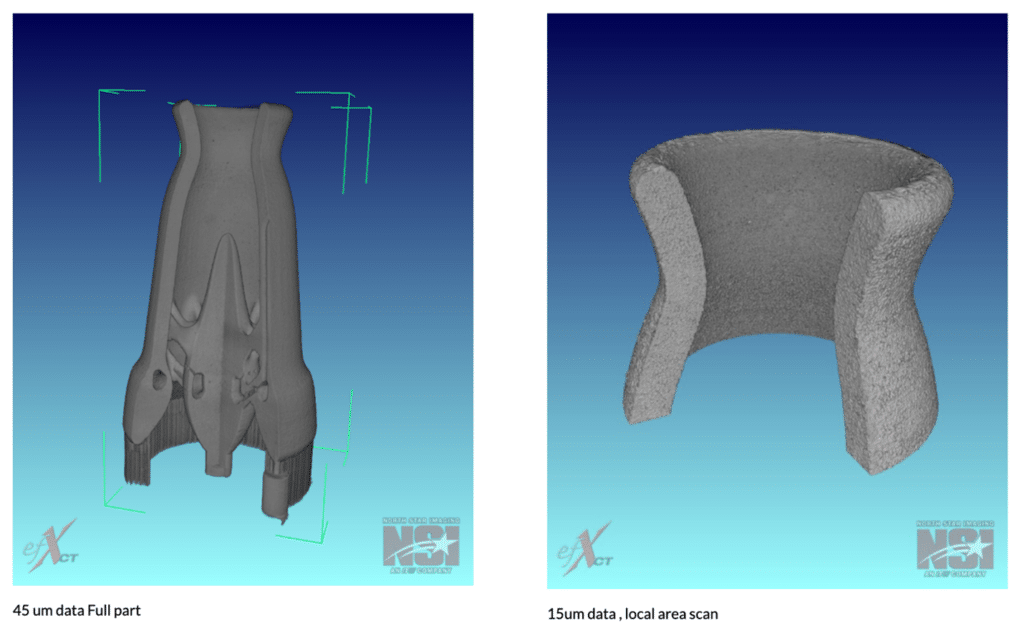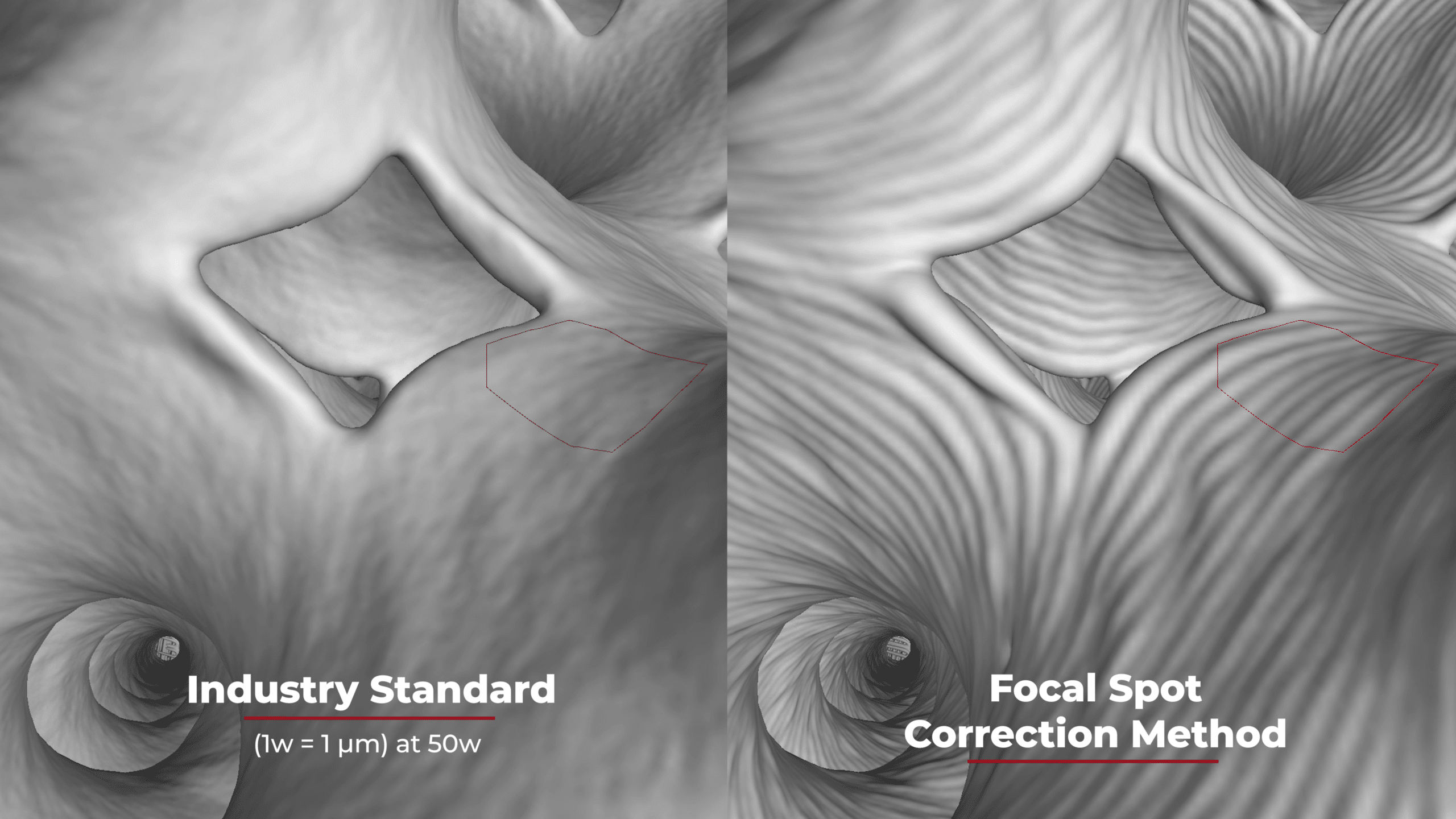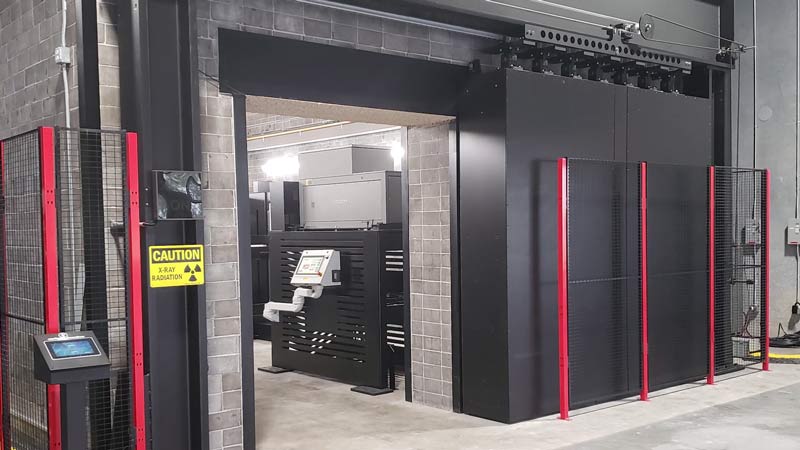The Role of Computed Tomography in Today’s Additive Manufacturing
Additive manufacturing (AM) has grown far beyond its origins in rapid prototyping, and is now used to produce a range of high-performance products and components. As well as offering material and energy efficiencies beyond traditional methods, AM enables the creation of multi-material objects with complex internal geometries.
Computed tomography (CT) plays a key role in the development of AM processes by enabling the complete 3D visualization of additively manufactured parts.
As 3D printing technology continues to evolve, additive manufacturing becomes increasingly versatile. As well as reducing material waste, AM techniques enable the construction of complex geometric shapes that would require multiple distinct processing steps and/or highly specialized production methods.
Additive manufacturing can also reduce the weight of components, and offers significant economic advantages for small unit volumes.1,2
The combination of precision, speed, affordability, and freedom of design means that AM is increasingly being used for the production of high-performance components; especially in aerospace applications where it can be used to produce porous or hollow-chambered components with drastically reduced weight.3–5
Developing New Additive Manufacturing Processes with Computed Tomography
The development of new applications for any technology requires accurate metrology. AM is no exception. Any defects in additively manufactured components must be reliably identified and accurately characterized to develop new AM processes and applications.
AM has special metrology requirements compared to other manufacturing techniques. AM involves the fabrication of 3D components either ‘from the ground up’ or ‘from the inside out.’
While this enables the construction of objects that comprise multiple materials or feature complex internal geometries, it also means that any metrology technique for additively manufactured parts must take into account the interior of objects and the surfaces.
Computed tomography (CT) has emerged as the best method for doing so.6 Computed tomography is a method of forming 3D representations of objects by taking many 2D X-ray images of an object around an axis of rotation. These 2D ‘slices’ can then be assembled into a 3D model using software.
Such visualizations enable a much clearer interpretation of internal structures than 2D techniques, which typically don’t offer sufficient detail of internal structures. Crucially, CT is completely non-destructive too.
CT scans of AM parts are enabling the refinement of existing AM processes as well as the development of new ones. For example, performing a CT scan of a particular component and comparing it to the original design enables manufacturers to determine the precise correlation between the schematic and the finished product.
Manufacturing artifacts or flaws can be easily identified and then corrected by making design or process adjustments.
Computed Tomography can be used for defect detection, high to low density anomalies on additive manufactured components. This tool can be used to take measurements where conventional tools may not, especially the internally. Comparison of CAD data, from the known model to production parts being made, we create the surface data using the wire mesh and create point cloud data for comparison. This information is extremely useful in finding deviations from the model early in the process which is key in avoiding critical failure and/or recall of parts.
To find out how CT could revolutionize your AM processes, check out some of our more in depth case studies and get in touch with a member of our team today.
References
- Joyce, J. Additive manufacturing paths to performance, innovation, and growth. (2012).
- Wong, K. V. & Hernandez, A. A Review of Additive Manufacturing. ISRN Mechanical Engineering 2012, 1–10 (2012).
- Schulz, B. Additive Technology Delivers Small Satellites to Space. (2019).
- Boen, B. 3-D Printed Rocket Parts Rival Traditionally Manufactured Parts. (2015).
- Dehue, R. The Possibilities of Weight Reduction With Additive Manufacturing. (2016).
- Thompson, A., Maskery, I. & Leach, R. K. X-ray computed tomography for additive manufacturing: a review. Meas. Sci. Technol. 27, 072001 (2016).




